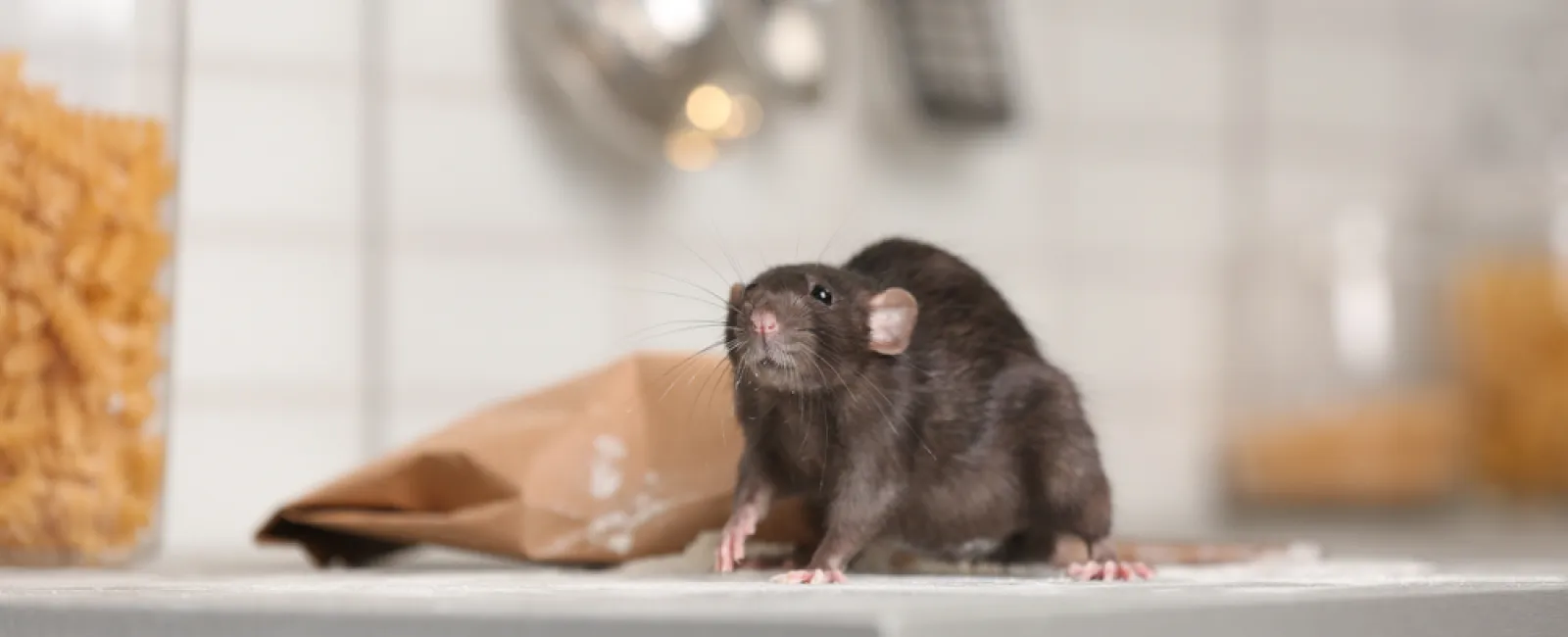When something goes bump in the night, it might not be your imagination. It could be rats.
While they may seem like shy, unseen pests, rats tend to leave behind obvious signs if you know where to look. From rat droppings to gnaw marks, a rat infestation can escalate quickly from a nuisance to a full-blown infestation—and that's not something you want to ignore.
Whether you're dealing with mice or rats, knowing the common signs of a rodent infestation is the first step toward reclaiming your home. Let's dive into how to find evidence of rats or mice, the health risks they pose, and why calling a pest control professional like Greenix is the best next move.
Common Signs of a Rat Infestation
If you're wondering how to know if you have rats in your house, start by looking for these sure signs:
1. Rat Droppings
Rat droppings are small, dark, and pellet-shaped—typically dark brown and about the size of a grain of rice. Fresh droppings are moist and soft, while older droppings dry out and crumble easily. You might find droppings in hidden areas like behind appliances, inside cabinets, or near food sources.
2. Gnaw Marks & Gnawed Holes
Rats have poor eyesight but excellent teeth. Gnaw marks on cardboard boxes, electrical wires, furniture, and walls are a telltale sign of a rat problem. You might even notice gnawed holes around your home—often near baseboards or entry points.
3. Nesting Material
Rats are crafty nest builders. They gather shredded paper, fabric, insulation, and other materials to build rat nests inside walls, attics, and crawl spaces. Seeing nesting material like chewed-up paper or insulation is a sure sign of an active infestation.
4. Scratching Sounds
Hear something scurrying in the ceiling or walls at night? Rats are nocturnal, so scratching sounds after dark could mean rodents are on the move, likely following the same paths they use night after night.
5. Urine Stains and Smudge Marks
As rats navigate your home, they leave behind urine stains, grease, and dirt, creating smudge marks along baseboards, pipes, and walls. Look for greasy streaks or dark marks along drain covers, pipes, and tight spaces.
6. Footprints and Tracks
In dusty or little-used areas like basements or attics, you may spot footprints rats leave behind—tiny paw prints or tail drag marks. Sprinkle flour in suspected areas overnight to check for new tracks.
7. Live or Dead Rodents
If you see a live rat darting through your kitchen or stumble upon a dead mouse, it's a glaring red flag of an active infestation.
What Types of Rats Are You Dealing With?
Just like people, rats tend to have different lifestyles depending on their species. Knowing whether you're up against roof rats or Norway rats can make all the difference when it comes to treatment. Let's break down the rat family tree so you know who you're dealing with.
Norway Rats
Also known as brown rats, Norway rats are the heavyweight champions of the rat world. These pests have dark brown or grayish fur, about the size of a large potato (when fully grown), and short tails compared to their body length. Norway rats prefer lower levels of your home—think basements, crawl spaces, and ground-level storage rooms.
They're notorious for:
Digging burrows in dirt or mulch near your foundation.
Gnawing on cardboard boxes, wood, and even electrical wires.
Leaving behind rat droppings near food sources or along their same paths.
Because of their size and habits, Norway rats can cause significant structural damage and increase health risks by spreading bacteria and disease through droppings and urine stains.
Roof Rats
Slimmer and more agile than their Norway cousins, roof rats—also called black rats—are climbers by nature. These pests have sleek, dark fur and long tails that help them navigate high spaces like attics, rafters, and upper cabinets. If you've heard scratching sounds overhead or in your walls, you might be dealing with roof rats.
Roof rats prefer:
Nesting in insulation, nesting material like shredded paper, or stored items in attics and garages.
Foraging for food on kitchen counters or in pantries.
Following pipes and wiring to move throughout your home unseen.
Both species pose major problems, but because roof rats tend to stay above ground while Norway rats stick to lower levels, a pest control professional can help you pinpoint which rat is taking over your space—and create a pest control plan to fit.
SUSTAINABLE RAT CONTROL SOLUTIONS
A rat infestation can jeopardize your home's hygiene and open the door to a number of health risks. At Greenix Pest Control, we use a specialized rodent treatment process to tackle tough infestations and ensure lasting protection from rats. Schedule your appointment by calling our team today.

